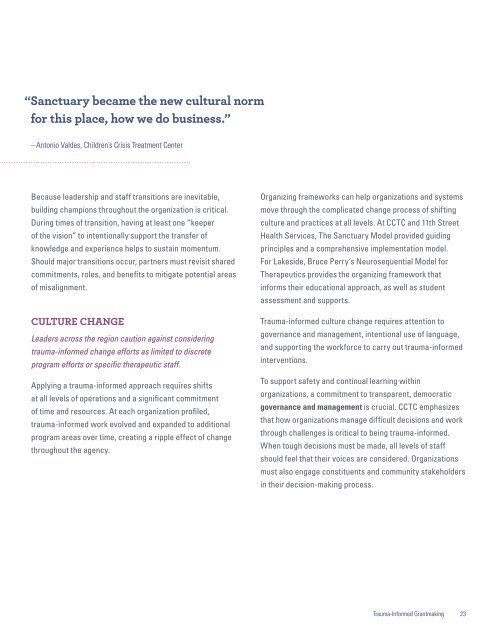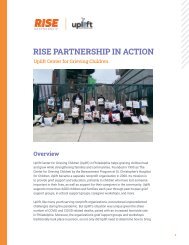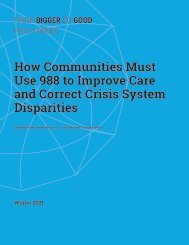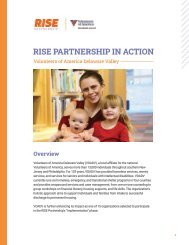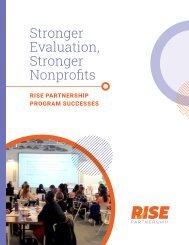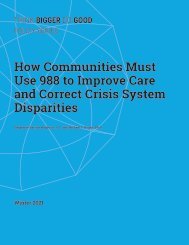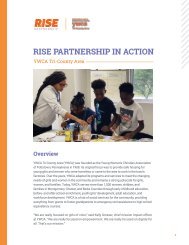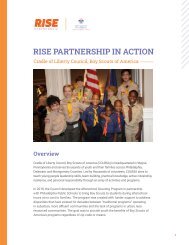Trauma-Informed Philanthropy Vol2
Create successful ePaper yourself
Turn your PDF publications into a flip-book with our unique Google optimized e-Paper software.
“Sanctuary became the new cultural norm<br />
for this place, how we do business.”<br />
— Antonio Valdes, Children’s Crisis Treatment Center<br />
Because leadership and staff transitions are inevitable,<br />
building champions throughout the organization is critical.<br />
During times of transition, having at least one “keeper<br />
of the vision” to intentionally support the transfer of<br />
knowledge and experience helps to sustain momentum.<br />
Should major transitions occur, partners must revisit shared<br />
commitments, roles, and benefits to mitigate potential areas<br />
of misalignment.<br />
CULTURE CHANGE<br />
Leaders across the region caution against considering<br />
trauma-informed change efforts as limited to discrete<br />
program efforts or specific therapeutic staff.<br />
Applying a trauma-informed approach requires shifts<br />
at all levels of operations and a significant commitment<br />
of time and resources. At each organization profiled,<br />
trauma-informed work evolved and expanded to additional<br />
program areas over time, creating a ripple effect of change<br />
throughout the agency.<br />
Organizing frameworks can help organizations and systems<br />
move through the complicated change process of shifting<br />
culture and practices at all levels. At CCTC and 11th Street<br />
Health Services, The Sanctuary Model provided guiding<br />
principles and a comprehensive implementation model.<br />
For Lakeside, Bruce Perry’s Neurosequential Model for<br />
Therapeutics provides the organizing framework that<br />
informs their educational approach, as well as student<br />
assessment and supports.<br />
<strong>Trauma</strong>-informed culture change requires attention to<br />
governance and management, intentional use of language,<br />
and supporting the workforce to carry out trauma-informed<br />
interventions.<br />
To support safety and continual learning within<br />
organizations, a commitment to transparent, democratic<br />
governance and management is crucial. CCTC emphasizes<br />
that how organizations manage difficult decisions and work<br />
through challenges is critical to being trauma-informed.<br />
When tough decisions must be made, all levels of staff<br />
should feel that their voices are considered. Organizations<br />
must also engage constituents and community stakeholders<br />
in their decision-making process.<br />
<strong>Trauma</strong>-<strong>Informed</strong> Grantmaking 23


